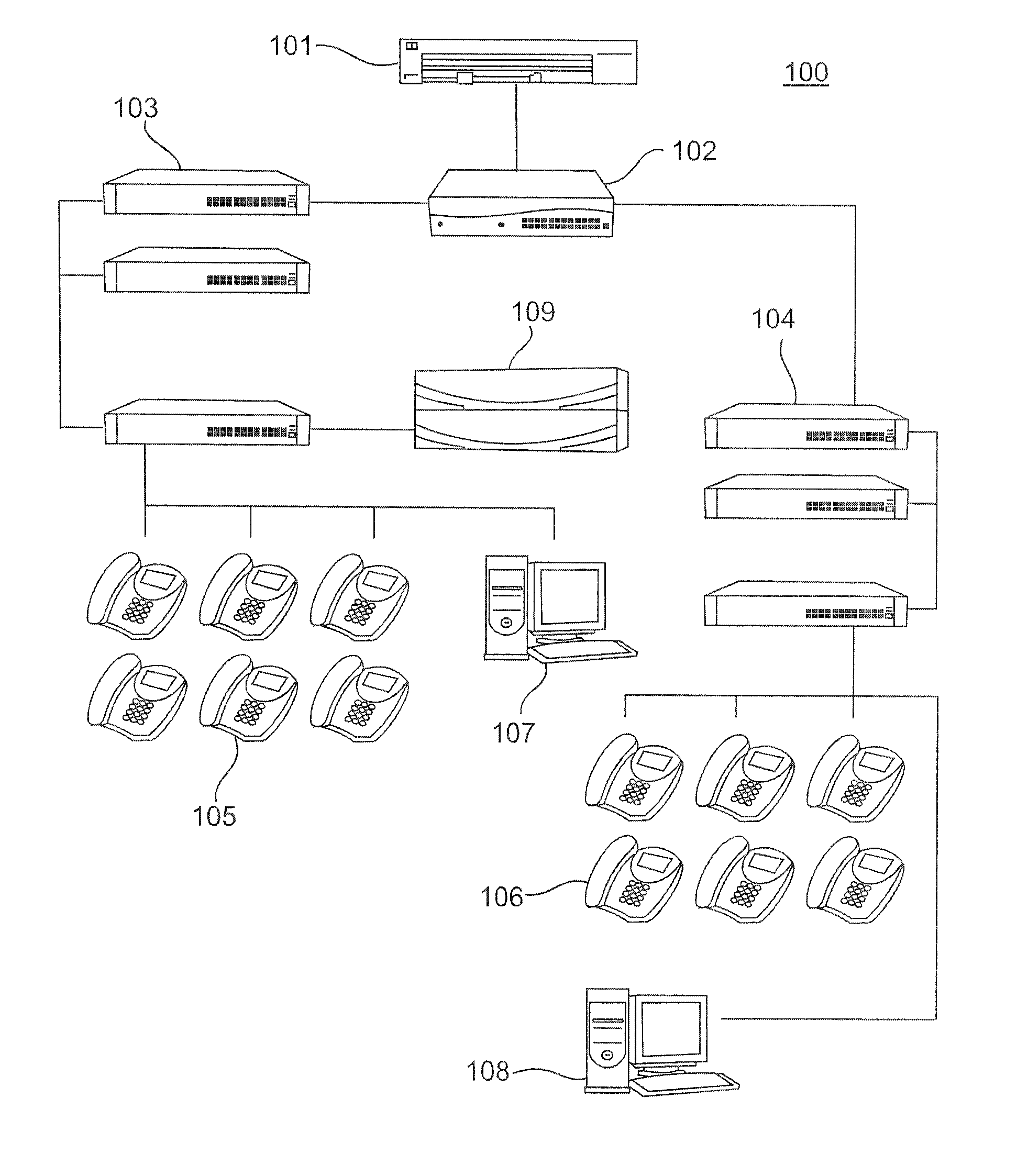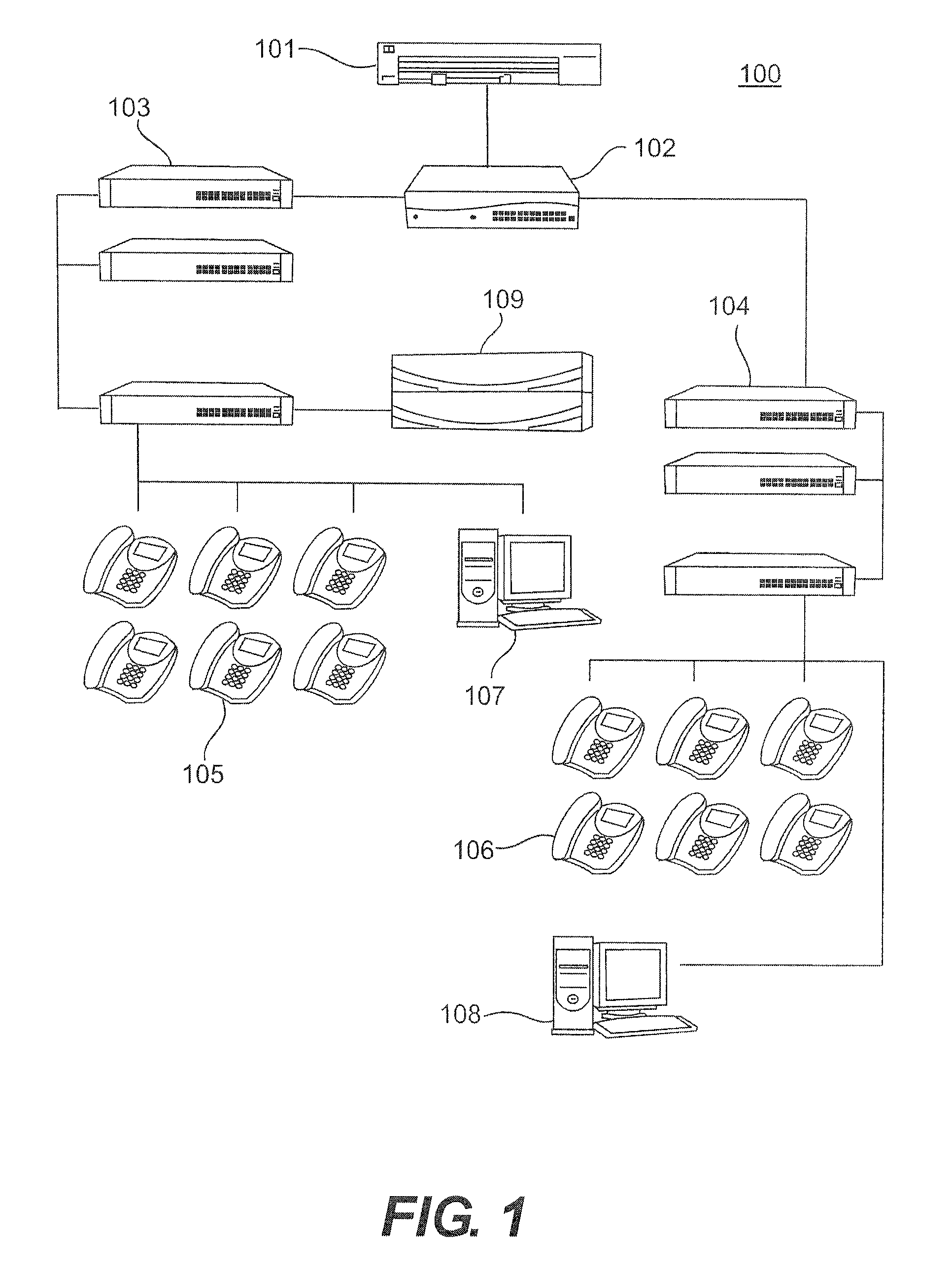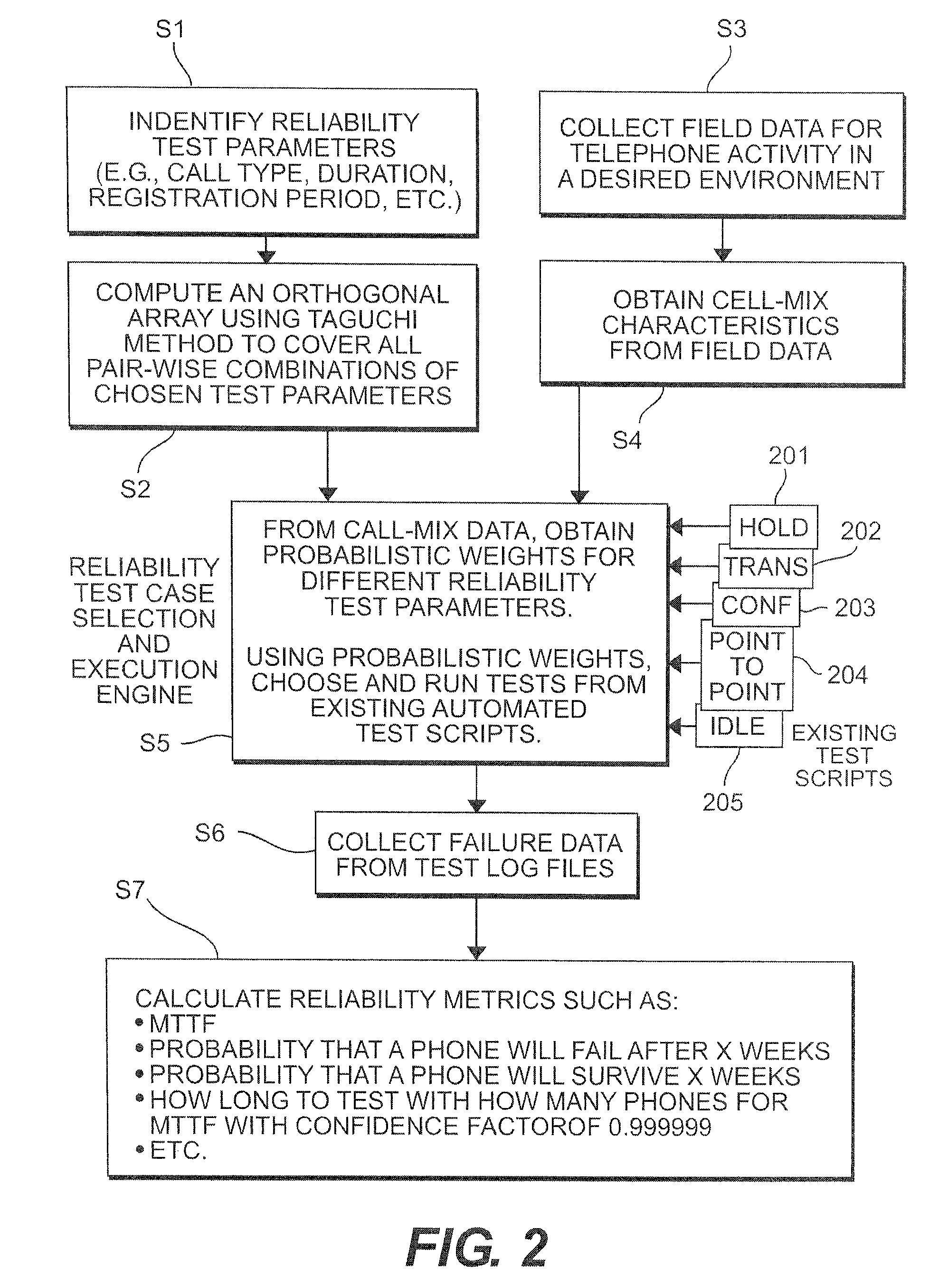Method for generating reliability tests based on orthogonal arrays and field data
a field data and orthogonal array technology, applied in the direction of resistance/reactance/impedence, testing circuit, instruments, etc., can solve the problems of prior art reliability tests not yielding a fast solution, the phone locks up or fails, and the selection of “good” or “effective” combinations of test parameters is not guaranteed. to achieve the effect of effective combination of test parameters
- Summary
- Abstract
- Description
- Claims
- Application Information
AI Technical Summary
Benefits of technology
Problems solved by technology
Method used
Image
Examples
Embodiment Construction
[0016]The state space is virtually infinite for covering all possible interactions that can happen in a telephone implementing complex software features (e.g., the telephones implementing SIP (See “Rosenberg”) or H.323 services, as described in ITU-T Recommendation H.323, “Packet-based Multimedia Communication Systems,” 2006.). One good approximation is using orthogonal arrays for testing all pair-wise combinations of different inputs. It has been shown in the literature that this approach which includes the Taguchi method, which is described in Phadke, M. S., “Quality Engineering Using Robust Design”, Prentice Hall, 1989, though not exhaustive, is preferable to randomly generated test cases since the orthogonal array approach guarantees that all pairwise combinations of inputs are covered by the test cases.
[0017]If the test cases of the present invention were solely based on orthogonal arrays, the test cases would lack the so-called “commonly used scenarios” that users in the field...
PUM
 Login to View More
Login to View More Abstract
Description
Claims
Application Information
 Login to View More
Login to View More - R&D
- Intellectual Property
- Life Sciences
- Materials
- Tech Scout
- Unparalleled Data Quality
- Higher Quality Content
- 60% Fewer Hallucinations
Browse by: Latest US Patents, China's latest patents, Technical Efficacy Thesaurus, Application Domain, Technology Topic, Popular Technical Reports.
© 2025 PatSnap. All rights reserved.Legal|Privacy policy|Modern Slavery Act Transparency Statement|Sitemap|About US| Contact US: help@patsnap.com



